Phrynosoma platyrhinos
—
Desert Horned Lizard
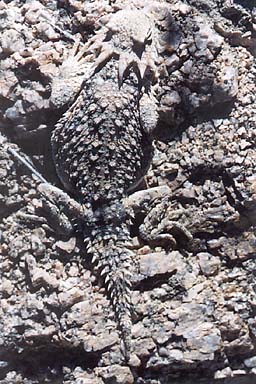
This beautifully camouflaged lizard was just a foot or so off the trail. We would have walked right by but it moved slightly. Then it sat oh-so-still while we oohed and ahed and photographed.
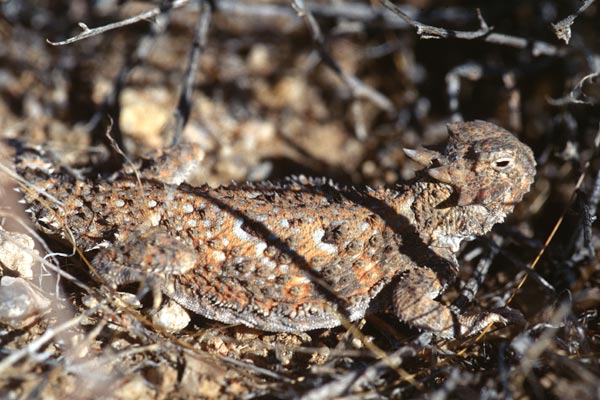
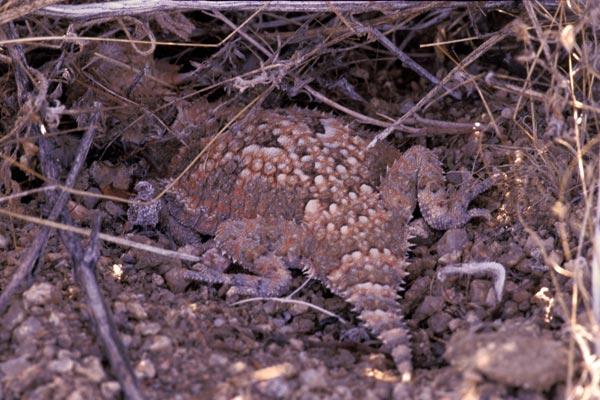
This little charmer waddled into the protective cover of bush when it caught me getting my camera out. Then it wriggled its flattened body from side to side in an attempt to bury itself in the sand. But there wasn't much sand, so it basically just added a little dead grass to its already excellent camouflage.
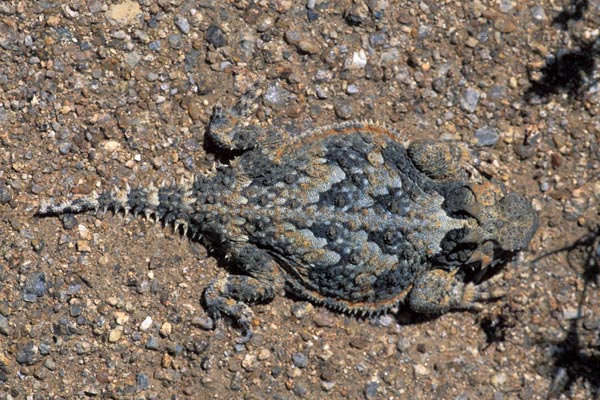
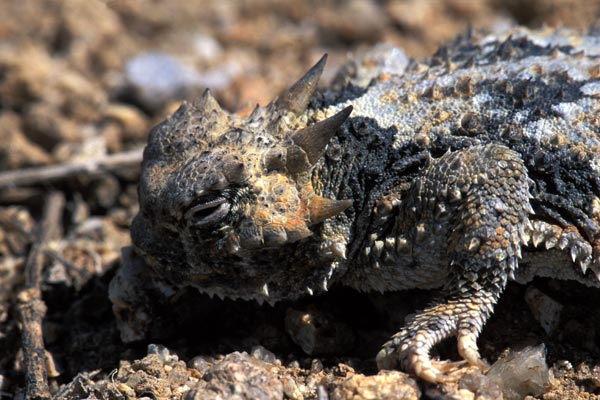
My wife was driving necessarily slowly along a bumpy dirt road while I watched the common zebra-tailed lizards, whiptails, and spiny lizards race across the road. One of the little racers seemed rounder, slower, and, well, more horned-lizardy than the others, so I sensibly yelled "Stop! Stop! STOPSTOPSTOPSTOP!". My wife managed to stop without sending any of our dogs through the windshield, and I leaped out of the car and ran back to where I thought my suspicious lizard had gone. Sure enough, this little camouflaged beauty was hiding out under a bush hoping I wouldn't notice him. But I did.
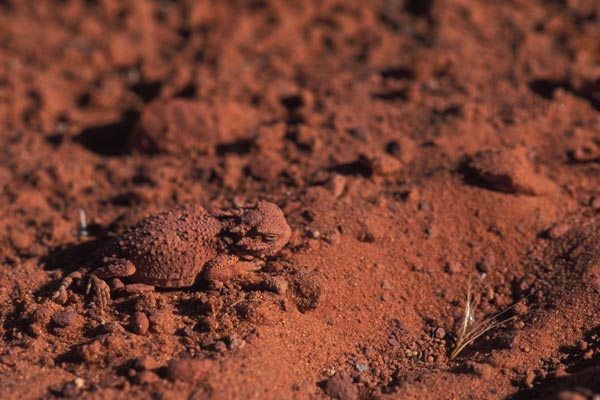
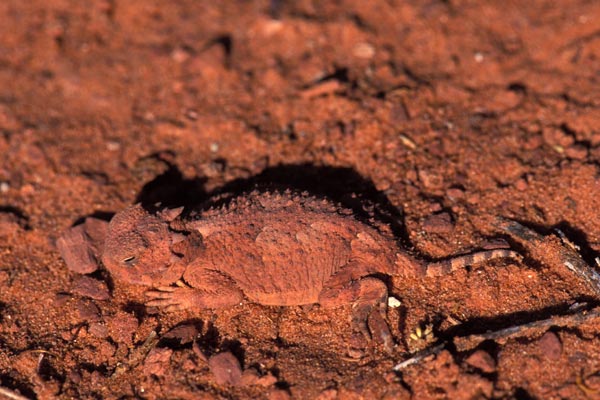
Speaking of camouflage, the desert rocks and sand in the southwestern tip of Utah are deep red, so the horned lizards are deep red to match. This youngster was nearly invisible when it wasn't moving.
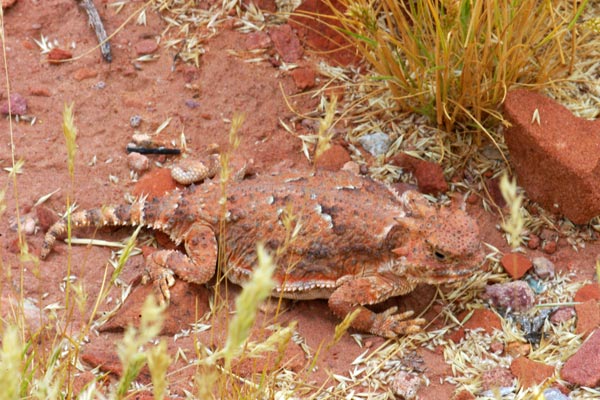
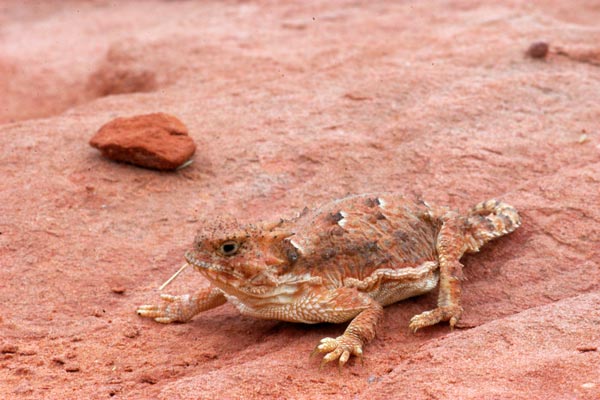
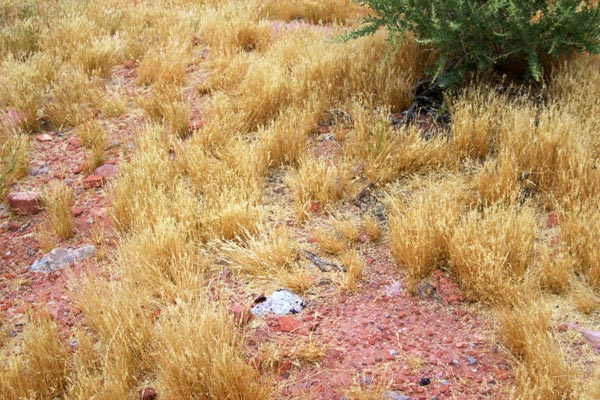
Here's another red-rock camouflaged desert horned lizard. This one dined on a large ant nest very close to the historic buildings at Lee's Ferry, at the start of the Grand Canyon.

At about 7:00 PM, I was driving on one of the main roads through the park. A light drizzle had been falling for a couple of hours until about twenty minutes earlier, which had kept the herps in hiding; I hadn't seen a single lizard during that while interval (the horror!). So when I caught a glimpse of what seemed to be a pale lizard form on a rock at the side of the road as I passed it, I immediately pulled over, turned around, and went back for a better look. My first thought was that it would probably turn out to be just a side-blotched lizard, since it looked small and side-blotched lizards are by far the most common small lizards in the area. When I recognized it as a horned lizard, I was thrilled since (as everybody knows) horned lizards are among the world's finest lizards.
I found it remarkable how closely the lizard's pattern matches the rock. Its camouflage would be nearly perfect to a color-blind observer.
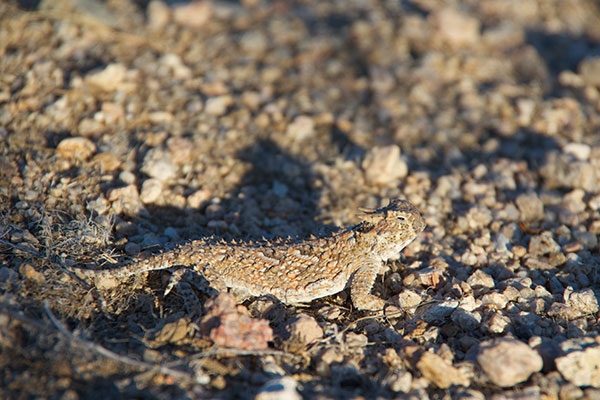
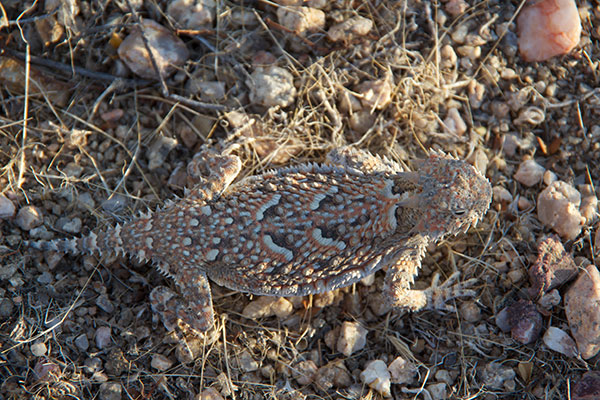
Near California City the horned lizards tend to have a pretty mixture of orange, white, and black, which makes them practically disappear against the gravelly desert floor.
Online references:
- Eric Pianka and Wendy Hodge's excellent article on horned lizards, from the University of Texas.
Printed references:
- Behler, J. L., King, F. W. 1979. The Audubon Society Field Guide to North American Reptiles & Amphibians
- Brennan, T. C. and Holycross, A. T. 2006. A Field Guide to Amphibians and Reptiles in Arizona
- Crother, B. I. (ed.) 2017. Scientific and Standard English Names of Amphibians and Reptiles of North America North of Mexico, with Comments Regarding Confidence in Our Understanding, Eighth Edition
- Miller, A. H., Stebbins, R. C. 1973. The Lives of Desert Animals in Joshua Tree National Monument
- Rogner, M. 1997. Lizards
- Sanborn, S. R. 1994. The Lizard-Watching Guide
- Schoenherr, A. A. 1992. A Natural History of California
- Sherbrooke, W. C. 1981. Horned Lizards: Unique Reptiles of Western North America
- Smith, H. M. 1995. Handbook of Lizards: Lizards of the United States and Canada
- Smith, H. M., Brodie, E. D. Jr. 1982. Reptiles of North America: A Guide to Field Identification
- Stebbins, R. C. 2003. Peterson Field Guide to Western Reptiles and Amphibians, Third Edition